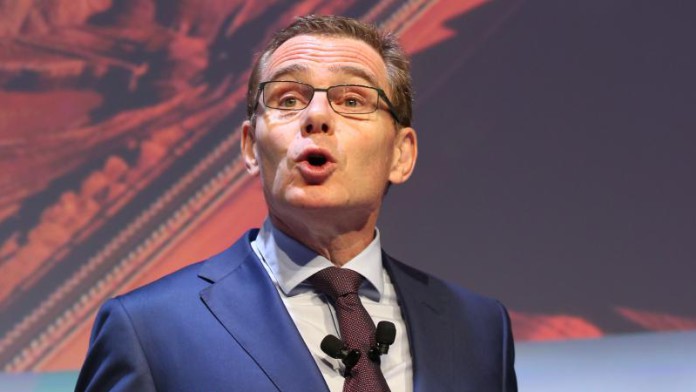
A QUESTION on the lips of mining industry investors, is whether the leaders of the industry are going to lose it again? The fear is that a new wave of heightened demand will encourage a fresh wave of project optimism and zealous capital spend.
It’s worth recalling just how bad things in the sector became. Take the aggregate market capitalization of the world’s 40 largest mining companies, for instance: they fell from $1.2 trillion to $494bn in three years, according to a report by PwC, the auditor.
All the metrics point to a loss of financial discipline that has since been recovered. For 2014, the market capitalization of the top 40 – which includes the likes of BHP, Anglo American, Glencore and South32 – rose to $926bn from $714bn a year earlier.
And having overcome the debt-fest of 2013, in which impairment charges increased to a 10-year high of $57bn – dividends paid increased 125% year-on-year to $36bn in 2017 from $16bn. Although less than the $41bn paid in 2013, it’s fair to say the mining sector’s big players are back on an even keel. Impairments totaled $4bn last year.
“We call it tempting times,” said Andries Rossouw, a partner at PwC, referring to whether mining companies will take the plunge and start splashing out on new productive capacity; after all, there are demand deficits to feed.
According to Aleksander Popovic, an analyst for CRU Group, a world renowned commodity markets research house, the demand outlook is rosy.
“While lithium, cobalt and some of the other hot metals have stolen the headlines, the overall outlook for demand is quite positive over the next five years,” he said at the Junior Indaba, a mining conference, earlier this month.
Rossouw doesn’t think, however, miners will fall into the temptation offered by improved market conditions. That’s because the metal price correction from 2012 to 2015 saw approaches to investor returns upended.
Gone was the progressive dividend – an unsustainable pledge to shareholders that returns would just keep improving – which was replaced with a thriftier approach in which companies pay dividends as a percentage of annual net profit. “Of the Top 40, 23 have a formalized dividend policy that on average aims to pay dividends at 30% to 40% of annual net profit,” said Rossouw. “Based on current performance and expectations, dividends paid are likely to remain high in 2018,” he said.
But there’s a flip-side to this: under-investment in new productive capacity can be just as hazardous as over-investment. PwC remarks in its report that junior mining has to find investment support. It said that “… the current lack of investment in exploration and capital projects will eventually catch up.
“Following a clear growth strategy through the cycle will help companies avoid the mad rush for resources at the top of the cycle.”
As frequently pointed out in these pages, South Africa is not known for its exploration or venture capital market for mining. Exploration was, historically, the preserve of the major mining companies which had the resources, balance sheet and income to support the high risk activity that is junior mining.
That, however, needs to change, according to Bernard Swanepoel, a founder of the Last Mile Fund which has been set up to invest in small scale mining and mining services. It recently bought a stake in Mooiplaats, a thermal coal mine in Mpumalanga province.
“North American gets a disproportionate amount of exploration money because they incentivize for it,” he said at the Junior Indaba. “I get the sense we don’t think we’re in competition with the rest of the world. And I think as a result, we’ll lose out to places like Zimbabwe which will get more money for mining this year.”
One of Swanepoel’s gripes is the poor regulatory environment for junior, exploration and small-scale mining. The Mining Charter, for instance, makes the same demands on the few exploration companies operating in South Africa as it does for the majors. Black ownership targets, for instance, are the same even though equity is a highly important financing tool for junior miners. “You can’t fund a piece of paper on predetermined ownership structures,” said Swanepoel.
There’s also not enough turnover in exploration and mining permits in terms of the ‘use it or lose it’ principle adopted in the Minerals and Petroleum Resources Development Act of 2004. “Why don’t we know how many permits have lapsed and why they haven’t changed hands?” asked Swanepoel.
According to Peter Major, an analyst with Cadiz Securities, the Department of Minerals Resources is heavily under-resourced. Working through its affiliated Council for Geoscience, geological information about South African minerals is poorly understood. Permits are issued too slowly and, he suspects, to friends instead of entrepreneurs with a hunger to make them work.
“South Africa Inc spent zero on exploration last year,” said Swanepoel. “The system is designed to put gatekeepers between yourself and success while the Mining Charter makes it almost impossible for junior miners.”










